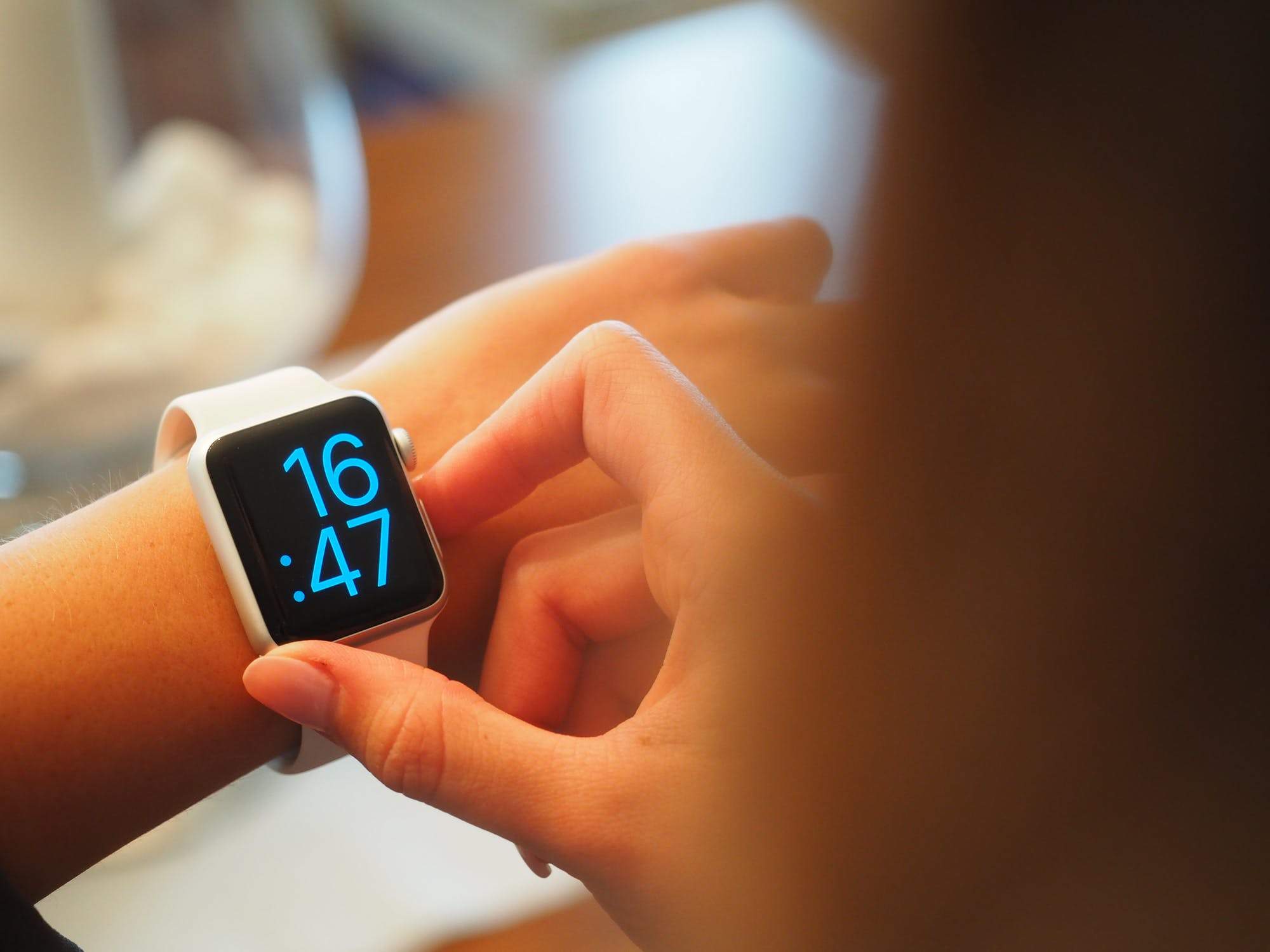Having well and truly arrived in the consumer space, wearable tech in the workplace is now becoming more commonplace in industries such as healthcare and manufacturing as a means of boosting productivity, reducing errors and communicating large amounts of data remotely

We’re likely to see a lot more wearable tech in the workplace over the next few years with the global market for devices such as smartwatches, smart glasses and wearable scanners reportedly set to reach $60bn (£46.6bn) by 2022.
While these gadgets and gizmos have the potential to transform our personal lives – providing additional convenience, fitness tracking abilities and more – they also bear massive implications for the world of business.
Wearable tech is already having an effect in a multitude of industries from manufacturing to healthcare but, as it becomes ever more ubiquitous and sophisticated, that impact will only deepen.
Inspired by ABI Research’s Enterprise Mobility Management Services for Wearables report, we’ve looked at five industries set to be forever changed by intelligent devices we can wear.

Wearable tech in the workplace: Healthcare
Perhaps the biggest proponent of wearables to date, the healthcare industry is set to see the rewards it already reaps from the technology expand exponentially.
Moving away from its staple image of a wrist-worn fitness tracker, wearable tech in healthcare extends to everything from blood pressure monitors to indigestible pills with an embedded sensor that allow doctors to ensure we’re taking our medicine.
The Abilify MyCite pills are manufactured by California-based Proteus Digital Health and were approved by the US Food and Drug Administration (FDA) last year.
Moreover, wearable devices are widely used in cardiology, where they allow for extremely acute monitoring of breathing patterns, blood glucose levels and body temperature.
And some doctors have even started using smart glasses that let them view patient X-rays without having to leave the operating room.
Regulatory approval from bodies including the FDA remains the largest obstacle to the advancement and wider user of the technology within healthcare, as they can often be slow to react to scientific progress.
Wearable tech in the workplace: Law enforcement
Body-worn cameras are the most commonly-used wearable devices in law enforcement at the moment, providing police with a hands-free method of tracking and reviewing their daily activity.
The VB-300 series by Scottish tech firm Edesix is one of the most advanced ranges, being weatherproof, lightweight and durable in addition to allowing for easy use even when wearing gloves.
Though they’ve not yet made it into widespread use, smart glasses have been touted as the next wearable device to transform the work of police, providing them with facial recognition technology which could highlight the profiles and criminal records of everyone from passers-by to key suspects.
Much like in healthcare however, policy issues remain the primary point of contention when it comes to the increased use of technology in law enforcement, with the legality of real-time access to personal data still up for debate in many countries.
Wearable tech in the workplace: Manufacturing
The manufacturing industry has yet to fully embrace wearable tech, with only isolated cases of its use cropping up occasionally.
For example, Dutch e-commerce company Active Ants used Google Glasses on a trial basis, helping employees select and prepare custom-designed products, after which it experienced a 15% boost in productivity with a 12% reduction in errors.
However, in a field where employees encounter dozens of hazards every day, wearable tech has the potential to not only improve efficiency, but also protect people from harm.
Devices with the ability to identify ambient threats like hot surfaces or dangerous spilled liquids could prevent accidents and ultimately save lives.
Further down the line, they could, in tandem with smart robotics, remove the need for workers to be near potential hazards at all, with automated machines doing the heavy lifting while employees track the progress on wearable devices from afar.

Wearable tech in the workplace: Warehousing
Behind the scenes of industries such as retail is the critical warehousing sector, within which supply chain managers currently use wearable tech to quickly and conveniently monitor operations.
They also receive alerts when specific events that require their attention within the warehouse arise, and are able to immediately communicate updates to other employees using the same device.
Wearable devices can provide contextual data about the work an employee is engaged in, which boosts productivity and minimises risk, particularly in picking, stacking and general order fulfilment accounts, which account for 70% of operating costs, according to Florida supply chain tech firm Datex.
But perhaps the biggest advantage they offer is through saving time, as they free employees of the need to constantly refer back to the database on their computer or the filing cabinet in their office, with all the information they need housed on their person.
Wearable tech in the workplace: Field service management
Being an industry where employees are constantly on the move and away from the office, field service management stands to benefit from wearable tech.
With the ability to view all the relevant information about tasks like remote equipment installation and repairs on a device, it can drastically reduce the number of errors committed by field service operators.
And the technology is just as promising at the other end of the chain, with field service management teams able to track metrics like the location, heart rate and temperature of their workers on connected devices.
Field force management software provider FieldEZ says: “One of the most significant advantages of leveraging wearable technologies and gadgets in the field service management space is an increase in productivity.
“The value proposition of wearable gadgets in the space is high, owing to the following ways the technology will impact the way field services are delivered and managed.”


